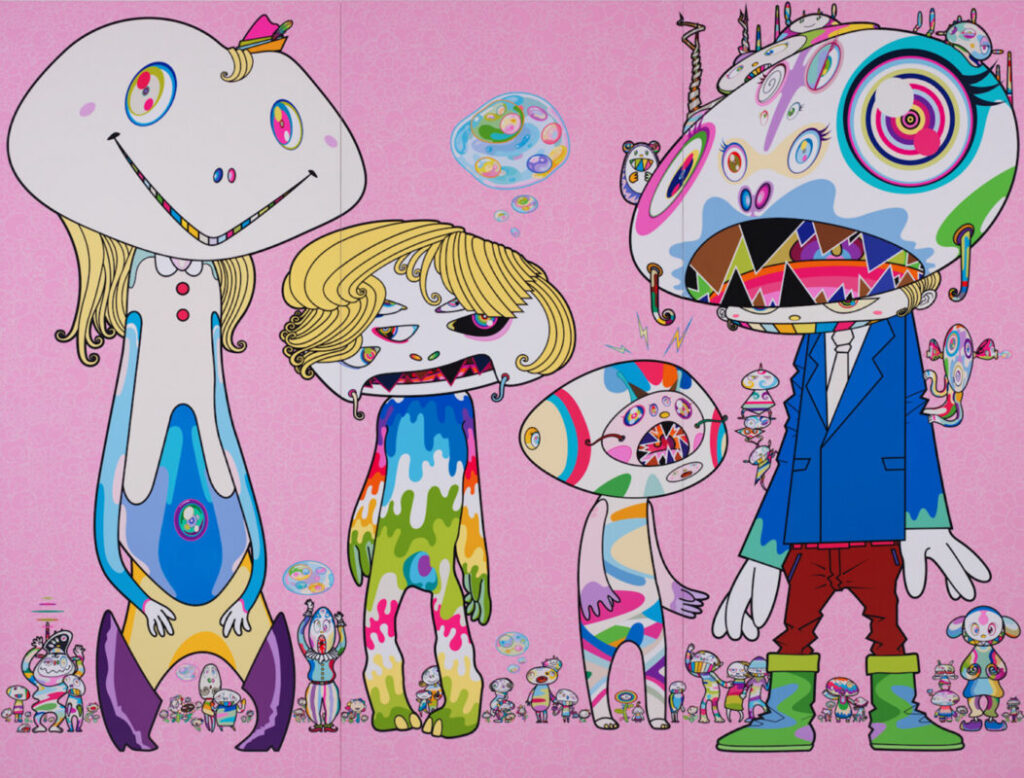Japanese art has a rich history that dates back to the prehistoric Jomon period. Over the centuries, it has evolved and adapted to various influences, both domestic and foreign. Today, the Japanese art scene is a vibrant mix of traditional and contemporary styles, reflecting the country’s unique blend of old and new. This article explores some of the current trends in the Japanese art scene.

- Superflat Movement
One of the most significant trends in contemporary Japanese art is the Superflat movement, pioneered by artist Takashi Murakami. Superflat is a postmodern art movement that blends high and low culture, combining elements from traditional Japanese art, anime, and pop culture. The term “superflat” refers to the flattened composition and graphic quality of the artwork, as well as the merging of art and commerce. Murakami’s colorful and whimsical creations have gained international recognition, making him one of the most influential Japanese artists today.
- Nihonga
While contemporary art movements like Superflat are gaining popularity, traditional Japanese art forms are also experiencing a resurgence. Nihonga, a style of painting that uses traditional Japanese artistic conventions and materials, is one such example. Nihonga paintings are characterized by their use of mineral pigments, sumi ink, and washi paper. In recent years, there has been a renewed interest in Nihonga, with artists like Hiroshi Senju and Ikenaga Yasunari gaining international acclaim for their modern interpretations of this traditional style.
- Digital Art
With the rise of technology, digital art has become a significant trend in the Japanese art scene. Japanese digital artists are known for their innovative use of technology, creating immersive and interactive art experiences. teamLab, a collective of artists, programmers, and engineers, is at the forefront of this trend. Their large-scale digital installations, which combine art, science, and technology, have been exhibited worldwide, challenging the boundaries of traditional art.
- Manga and Anime Art
Manga and anime have long been a part of Japanese pop culture, but in recent years, they have also become a significant influence in the art scene. Artists like Yoshitomo Nara and Aida Makoto have incorporated elements of manga and anime into their work, creating a unique fusion of high art and popular culture. Additionally, manga and anime art exhibitions have become increasingly common in art museums and galleries, reflecting their growing acceptance as legitimate art forms.
- Street Art
Street art is another growing trend in the Japanese art scene. While graffiti was once considered a form of vandalism in Japan, it is now gaining recognition as a form of artistic expression. Japanese street artists like Lady AIKO and Dragon76 are known for their distinctive styles that blend Japanese and Western influences. In cities like Tokyo and Osaka, street art has become a common sight, adding color and creativity to the urban landscape.
In conclusion, the Japanese art scene is a dynamic and diverse field that encompasses a wide range of styles and mediums. From the postmodern Superflat movement to the traditional Nihonga style, from digital art installations to manga-inspired paintings, Japanese artists continue to push the boundaries of creativity and artistic expression. As these trends evolve, they reflect the changing face of Japan, a country that seamlessly blends tradition and innovation.
